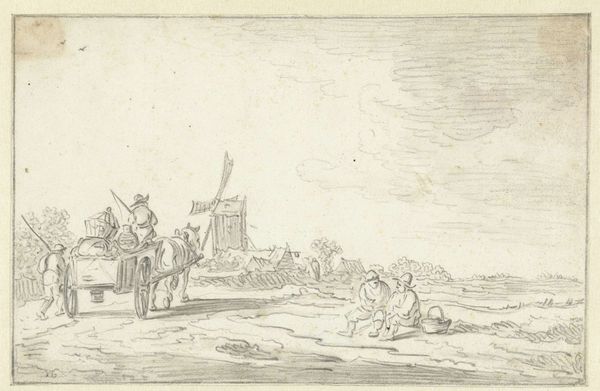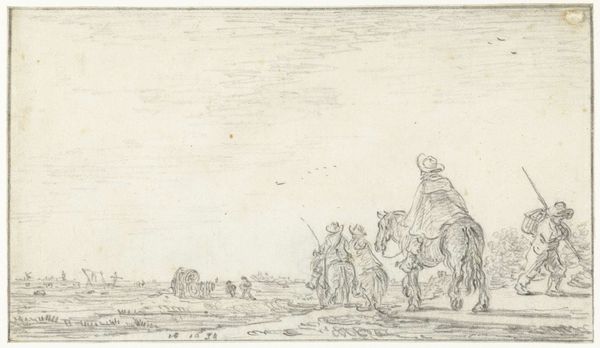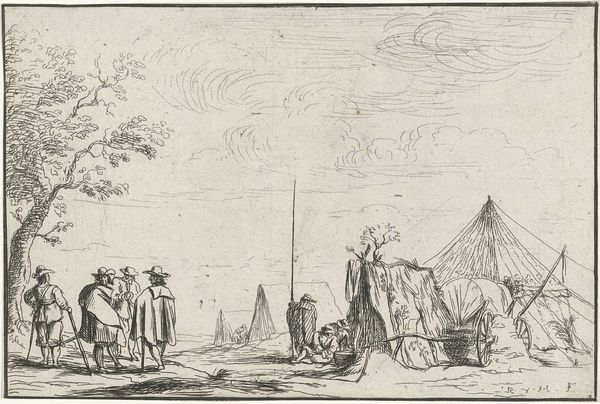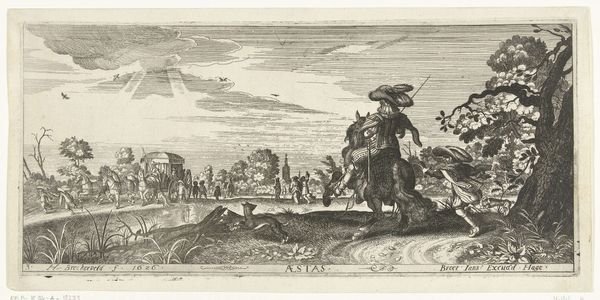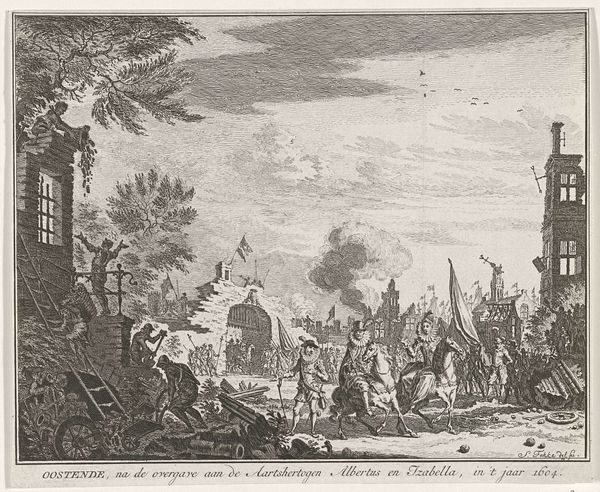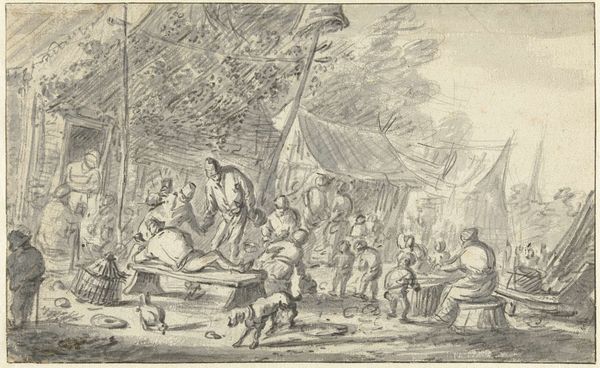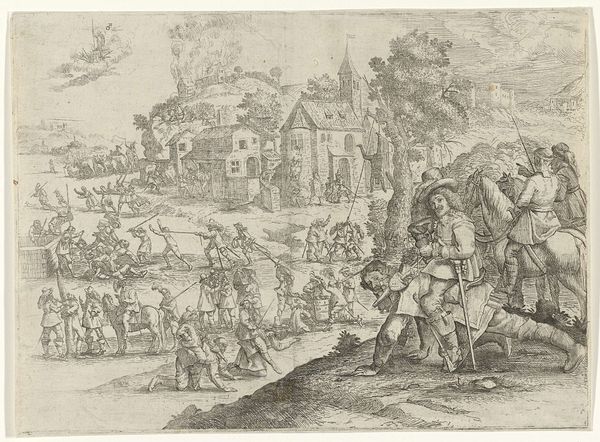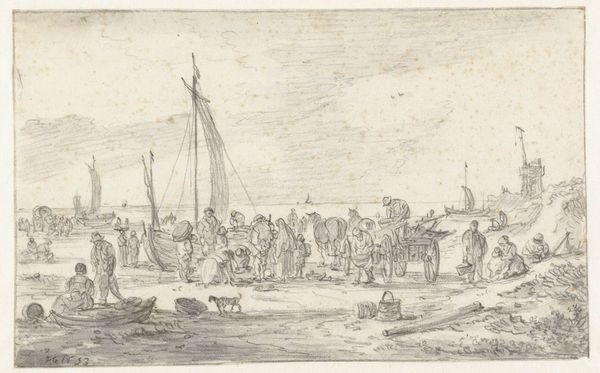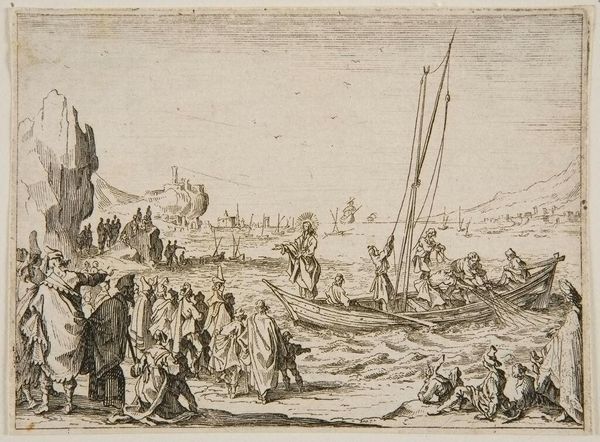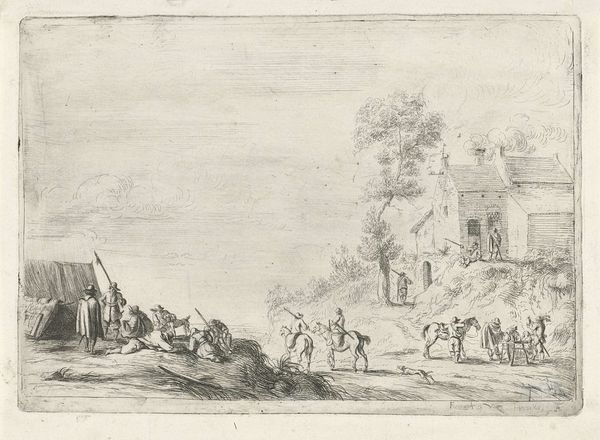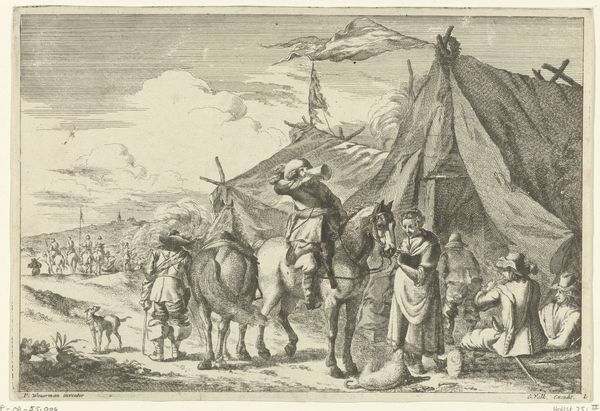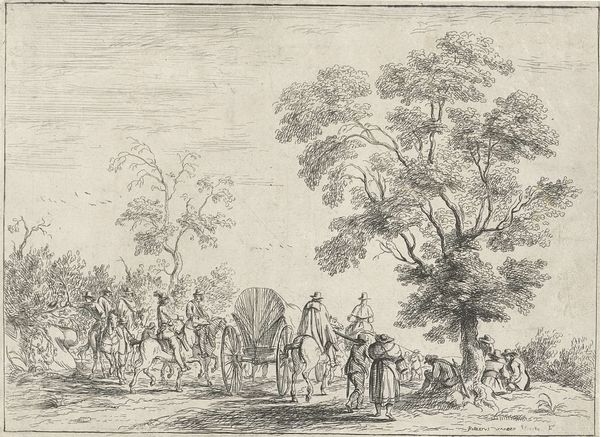
Dimensions: height 178 mm, width 273 mm
Copyright: Rijks Museum: Open Domain
Curator: Let’s discuss "Charlatan by a Bridge," a pen and pencil drawing by Joannis Jacobus Bijlaert, created around 1768. It’s part of the Rijksmuseum’s collection. Editor: My initial impression is one of subdued chaos, if that makes sense. A busy marketplace scene rendered with a surprisingly delicate hand. Curator: Precisely. Observe the artist's skillful use of line to delineate the figures and architectural forms. There’s a definite Baroque sensibility in the dynamic composition. Consider the spatial relationships and the use of chiaroscuro to create depth and focus attention on the central figure, the charlatan. Editor: But who exactly is the charlatan preying upon? This is 1768. What are the prevailing socio-economic conditions that allow someone like him to thrive? And, further, who among this crowd are the most vulnerable, perhaps due to gender, race, or class? Bijlaert captures a scene ripe with the anxieties of a pre-revolutionary era. Curator: Certainly, one can analyze it from a social perspective, viewing the charlatan as symbolic of broader societal exploitation. But I am particularly struck by the artistry. See how the artist's repeated lines mimic textures from clothing to water. The lines form a complex interwoven mesh across the drawing plane. The economy of the composition creates the illusion of three-dimensionality with minimal resources. Editor: True, Bijlaert's technique is masterful. However, I believe focusing solely on formal elements risks overlooking the drawing's critical dimension. It hints at an entire network of power relations, revealing who speaks, who listens, and who is silenced in the pursuit of profit. Even the bridge acts as an interesting symbolic crossing point. Curator: I concede the social dynamics add another layer of interpretation. The placement of the charlatan above the crowd gives the art clear hierarchical framing. Ultimately, Bijlaert demonstrates a keen understanding of both human nature and visual representation. Editor: And that interplay—between form and content—reminds us of the inherent power dynamics embedded within even the most seemingly innocuous street scenes. Curator: Indeed, analyzing its art contributes to a more holistic experience, acknowledging its visual and intellectual resonance. Editor: I find a call to consider the unseen stories rippling outwards from the heart of 18th century civic life.
Comments
No comments
Be the first to comment and join the conversation on the ultimate creative platform.
